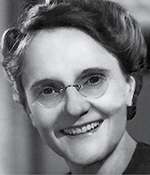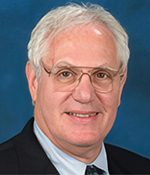
“Don’t confuse the device with the biomechanics,” Jacquelin Perry, MD, once warned me. “If you reproduce the biomechanical environment, the process should occur regardless of the apparatus employed.” Dr. Perry was referring to the formation of new bone in a widening distraction gap, a discovery made by Russian surgeon Gavriil Abramovich Ilizarov in 1951. During the summer of 1987, I made a one-on-one presentation to Dr. Perry—my colleague at Rancho Los Amigos Medical Center in Los Angeles—about what I had learned during my trip into the Siberian heartland 2 months earlier. I had a carousel full of 35 mm slides depicting patients from Ilizarov’s Institute in Kurgan, Russia, which I projected onto the wall of her gait lab at Rancho.
My Russian hosts had convinced me that Dr. Ilizarov’s circular external fixator, secured to bone with tension wires, was essential to “regenerate” new bone formation during limb elongation. Dr. Perry disagreed, sharing the advice above. Considering her stature in the orthopaedic community, I heeded her advice, to my considerable benefit.
At that point, the publication of Dr. Perry’s monumental Gait Analysis: Normal and Pathological Function was 5 years in the future, and she was 7 years from being named California’s “Physician of the Year.” Nevertheless, Dr. Perry was already a legend among orthopaedic surgeons and physical therapists around the world. She started her career as a physical therapist with a degree from the University of California, Los Angeles. After a stint in the Armed Forces, she used the G.I. Bill to attend medical school at the University of California, San Francisco (UCSF), followed by an orthopaedic surgery residency in that facility. There, Dr. Perry first encountered Verne T. Inman, MD, PhD, whose gait lab she admired.
After finishing her training, Dr. Perry joined the staff at Rancho to focus on victims of poliomyelitis. She established a gait lab modeled after the one at UCSF. Dr. Perry refined and improved the techniques used at UCSF to understand why individuals with certain paralyzed muscle groups walked the way they did. She thus became a pioneer in patho-kinesiology, the branch of biomechanics that studies abnormal bodily movements.
Along the way, Dr. Perry, working with Vernon Nickel, MD, devised the halo-pelvic distraction apparatus to straighten out paralytic spines for fusion surgery. In a sense, the halo—still used during the management of spinal disorders—is a ring fixator of sorts, secured to the skull with screw-like fixation points.
Although Dr. Perry was the first woman on the Editorial Board of the Journal of Bone and Joint Surgery, she was not the first board-certified female orthopaedic surgeon. That distinct honor belonged to Ruth Jackson, MD. Born in Iowa in 1902, Dr. Jackson always wanted to become a doctor. As a woman, she could not study pre-medicine at the University of Texas, Austin. She obtained a degree in sociology instead. Despite this obstacle, she completed her medical education at Baylor College of Medicine and an internship at Worcester Hospital in Massachusetts in 1928. Dr. Jackson wanted to be a general surgeon, but that field was closed to women at the time. She returned to Iowa, where she was accepted into the nascent orthopaedic surgery program at the University of Iowa, headed by Arthur Steindler, MD, a pioneer in the application of mechanical principles to orthopaedic problems.
My father, a contemporary of Dr. Jackson, told me about his orthopaedic education in the 1930s. During that era, many young doctors had to piece together their own residency programs, much like the journeyman apprentice surgeons in Europe at the time. They couldn’t sit for the board certifying examination in orthopaedic surgery until they had completed the requisite number of months in various hospitals and training in certain required subjects. Moreover, the house staff doctors were truly interned or residents at the facilities, compelled to live there like prisoners—with occasional furloughs.
Dr. Jackson made such a circuit. After working with Dr. Steindler for a year, she returned to Worcester for another year, then ended with yet another residency term back in Texas, where she had started her journey. When AAOS was established in 1933, all practicing orthopaedic surgeons automatically became members, but as a woman, Dr. Jackson was denied fellowship despite having completed her training. She had to pass the Orthopaedic Surgery Board Certifying Examination prior to being admitted to AAOS in 1937—the first woman accepted in both categories. By then, Dr. Jackson was already chief orthopaedic surgeon at Parkland Hospital in Dallas, where she later founded an orthopaedic residency.
Dr. Jackson became an acknowledged expert in cervical spine disorders, with numerous publications and podium presentations on the subject. In 1983, six female orthopaedic surgeons founded the Ruth Jackson Orthopaedic Society to promote women’s involvement in orthopaedics. Dr. Perry was in that original group and served as the organization’s second president.
Drs. Jackson and Perry (who died in 1994 and 2013, respectively) would have enjoyed reading the issue of AAOS Now regarding recent progress in orthopaedic biomechanics, especially in light of their own contributions and their respective associations with pioneers in the field. Each would likely be pleased to see the steady increase in women becoming orthopaedic surgeons, having been role models for so many. Indeed, the Perry Initiative was initially created to encourage women in medical school to become orthopaedic surgeons and has since expanded its mission to generate enthusiasm among high school girls about the possibility of becoming either doctors or engineers. My daughter mentored such a Perry Initiative high school program, a fulfilling opportunity for her, as an orthopaedic surgeon and as a former patient of Dr. Perry.
In 2024, women comprise 55.6 percent of first-year students at medical schools in the United States. Increasing opportunities for women in orthopaedics expand the available talent pool in the best way possible.
Stuart A. Green, MD, FAAOS, is cofounder and past president of the Limb Lengthening and Reconstruction Society; past president of the Association of Bone and Joint Surgeons; and a clinical professor of orthopaedic surgery at the University of California, Irvine. He is the son, first cousin, and father of AAOS Fellows. Dr. Green is a member of the AAOS Now Editorial Board.

